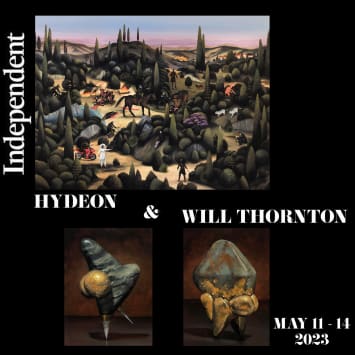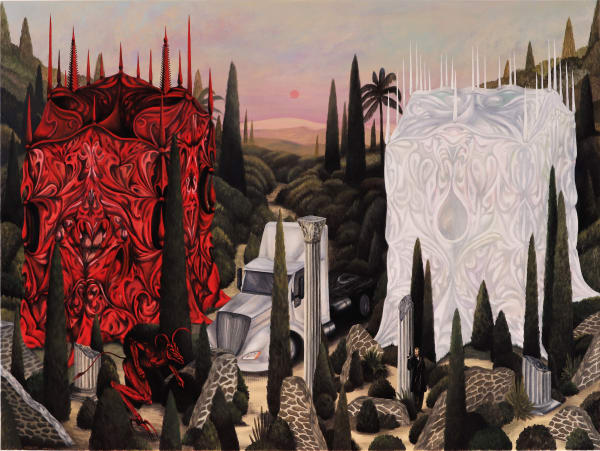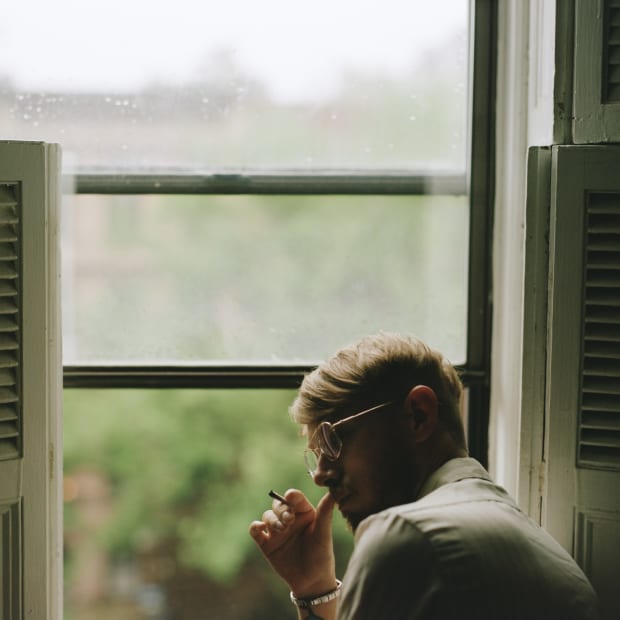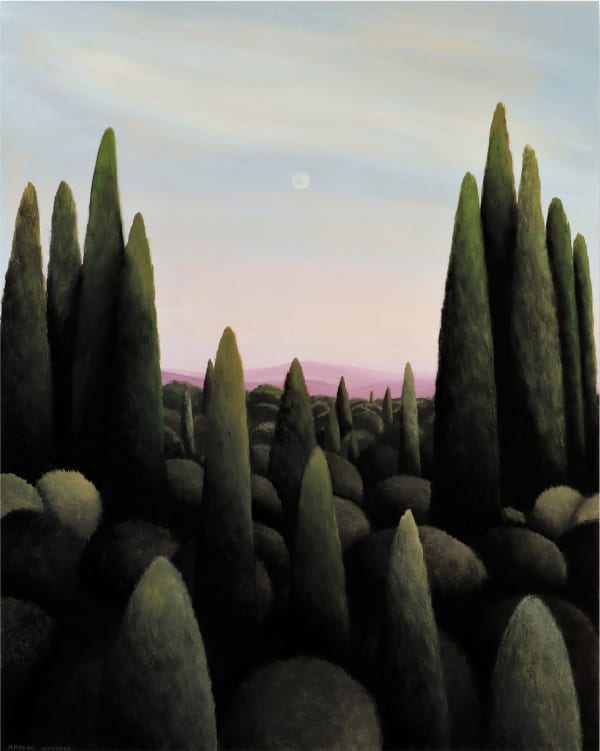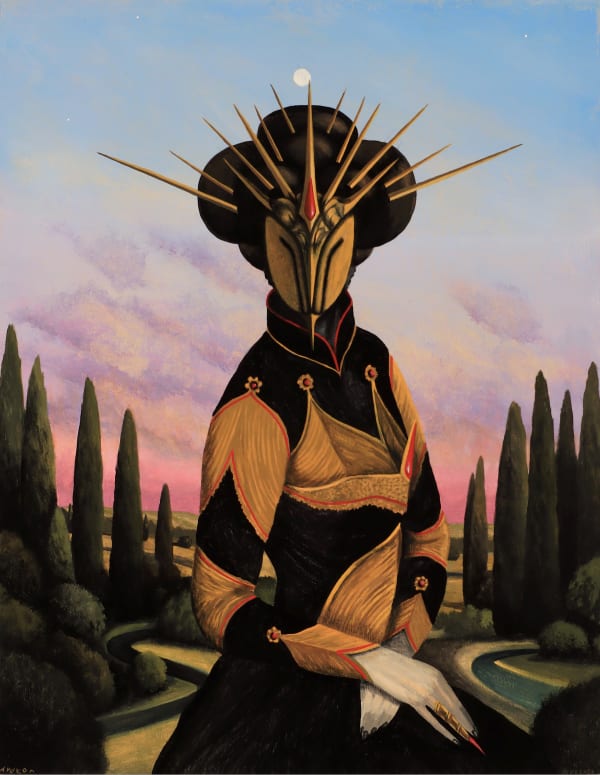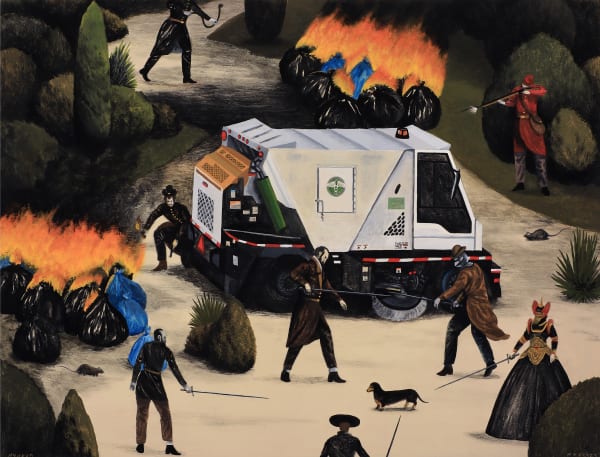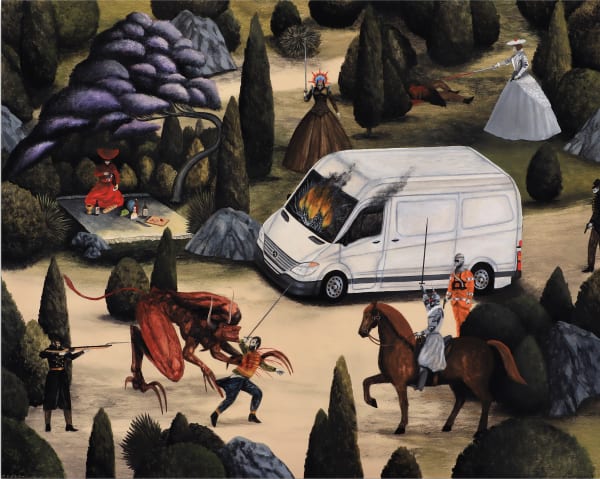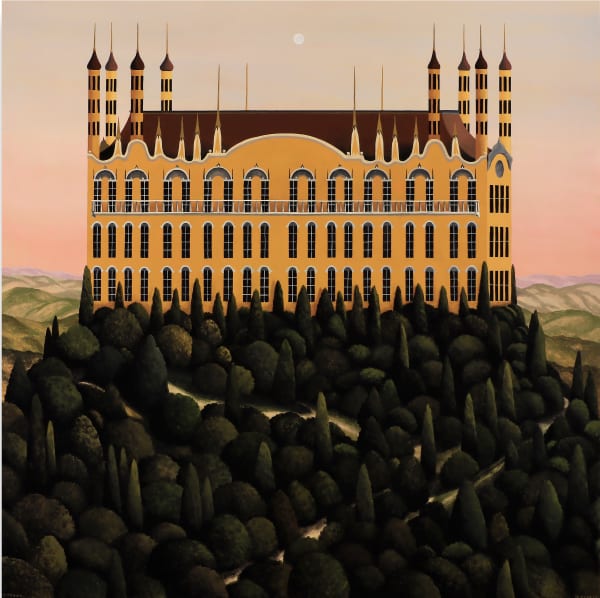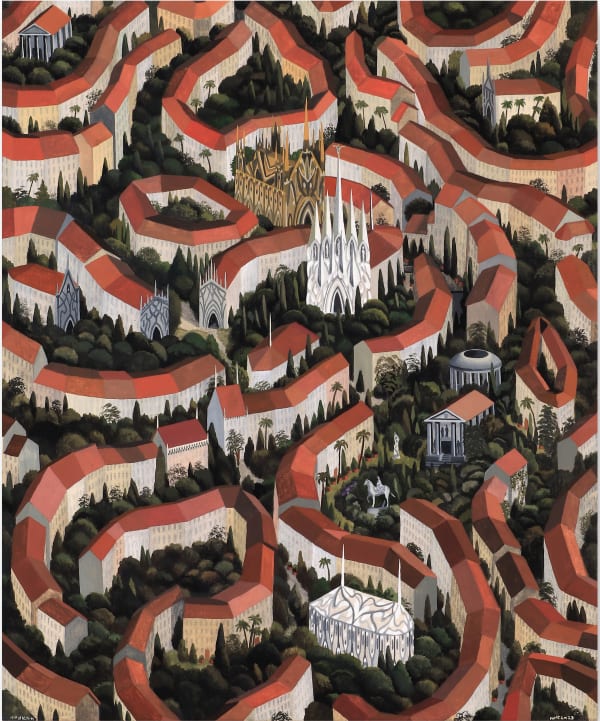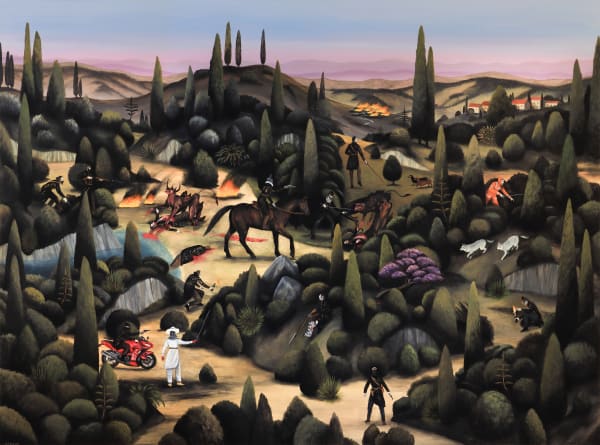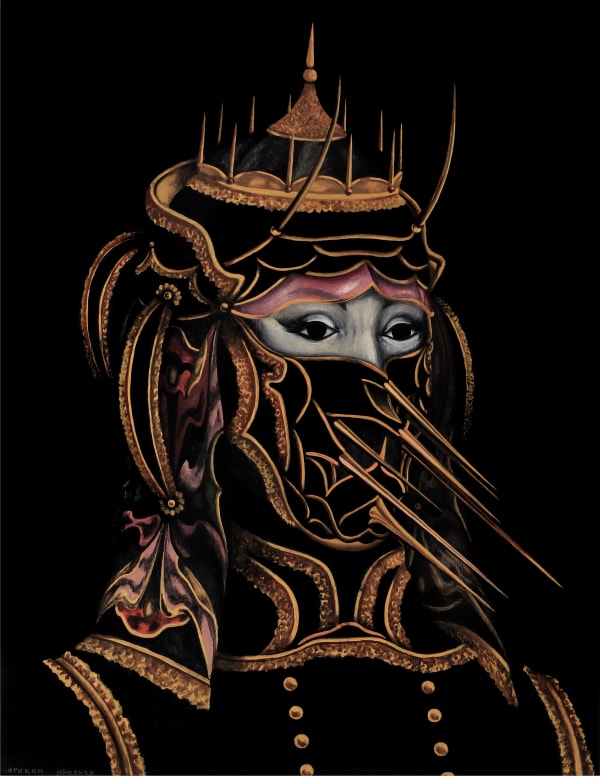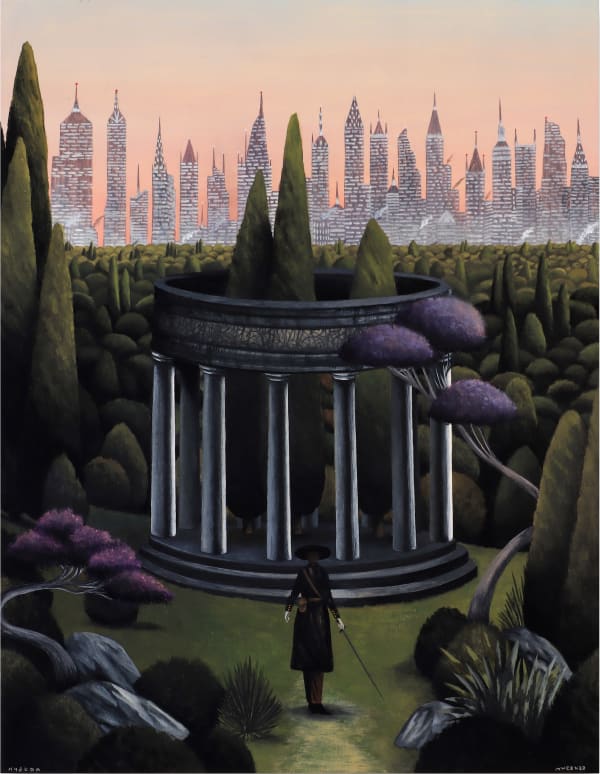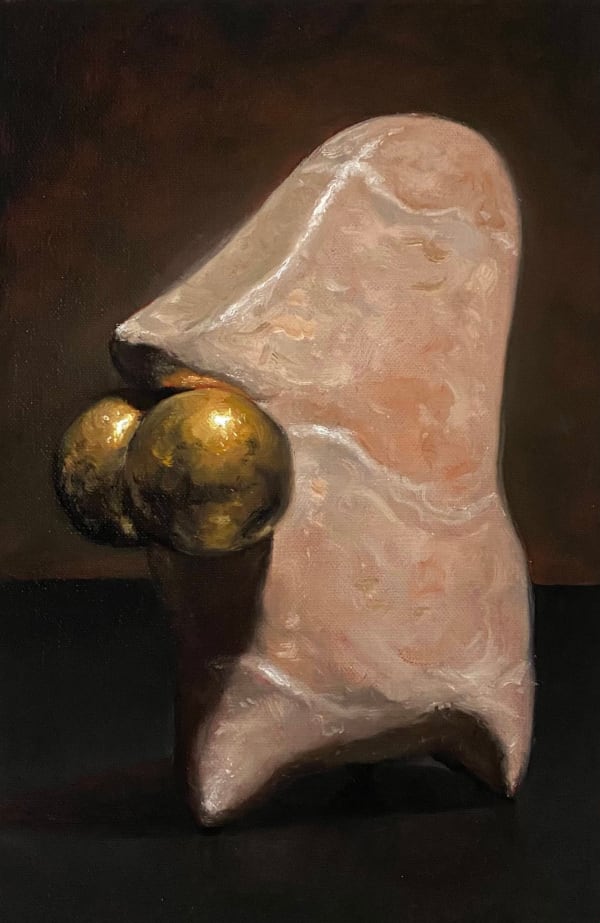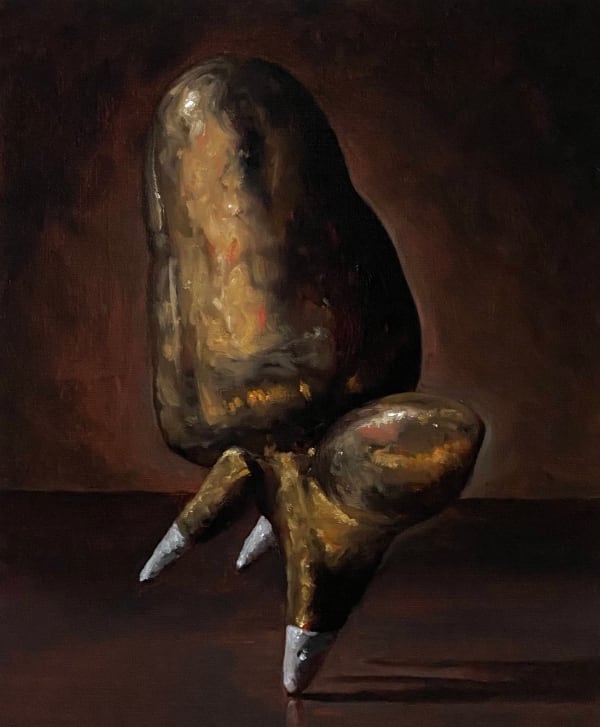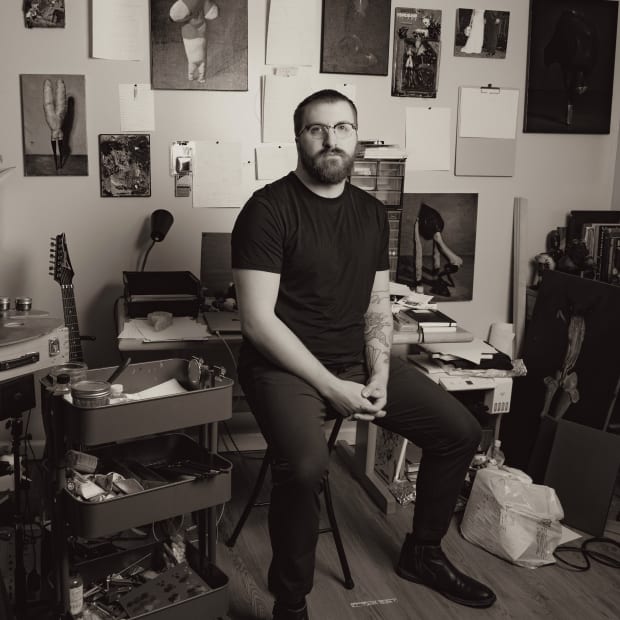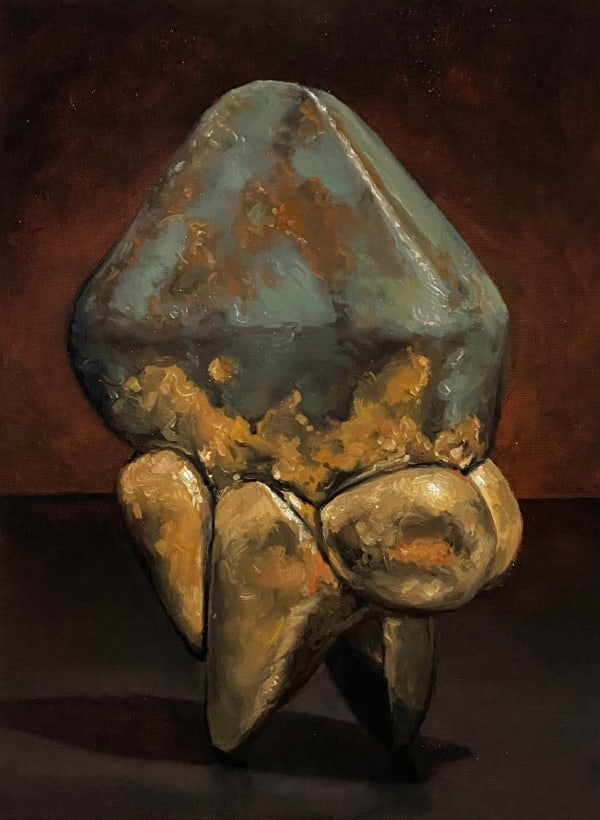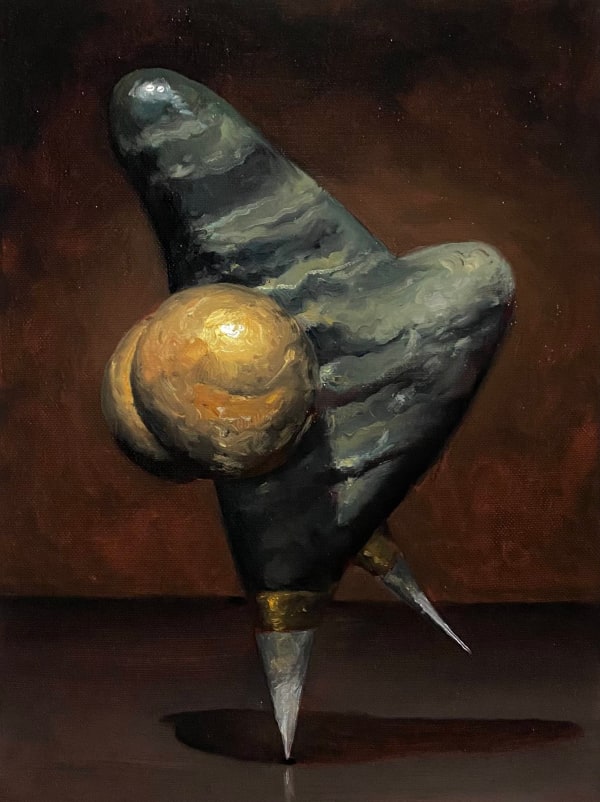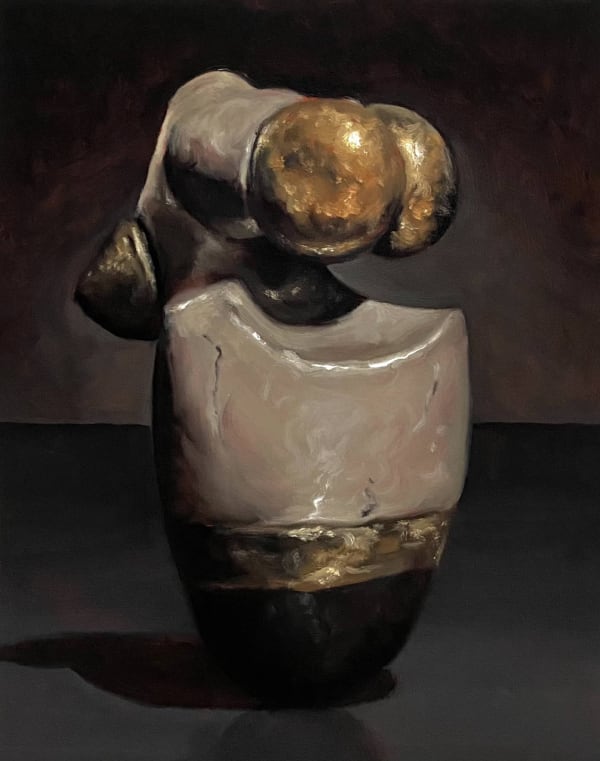SPRING STUDIOS
50 VARICK STREET, New York, NY 10013
For the 2023 edition of the Independent Art Fair, Ricco/Maresca is pleased to present the New York debut of the work of contemporary artists Hydeon and Will Thornton. The gallery’s booth comprises all-new work, much of it conceived specifically for this exhibition. We will explore a dialogue between Hydeon’s acrylic and gouache paintings—which offer a lucid fusion of references, from ancient civilizations to the present and imagined future—and Thornton’s sumptuous oil paintings, at once still-lifes and portraits executed in a rich baroque palette.
-
HYDEON
-

-
"When I was in middle school, my friends referred to me as 'Æon Flux' from the popular MTV show at the time—which made sense, because my real name is Ian. I thought about 'Æon Flux' and how I could transform it, so I took Aeon and made it Eon and then came up with the Hyd part and combined the two to make Hydeon. It made sense to me immediately and it had the ring I was looking for. Years later I thought about how it can be pronounced as 'Hide-Ian' or 'Hid-eon' and how my real name hides under Hydeon."
-
"As someone who’s studied graphic design but works as a fine artist, I feel like it definitely influences my work in a subtle but positive way. I'm always thinking about the layers of my work being like layers in Photoshop and also about color theory, typography, and spatial compositions."
-
"I like to think of my work as being like old campfire stories told in a sandbox with no borders. Or even like a room with no windows, but only a door. You know there is something outside the door, it could be many worlds, and it could have a world with many windows, but you don’t know because you’re in a room with no windows and only a door. You must go through the door to find out what’s on the other side if that makes any sense."
-
WILL THORNTON
-

-
"My work begins with drawings ... I will then make a small, crude sculpture of these drawings, either in clay or fabric, as a reference for the final painting. These sculptures are then posed, lit, and photographed to be painted.
Every painting follows the same rules–there is a character posed on a smooth floor with a nondescript background behind them, and that simplicity destroys any real sense of place or scale. It’s just the characters that change, and that is exciting to me. It’s like a petri dish for ideas."
-
"The characters I paint are difficult to describe. They’re meant to carry an emotion, a memory, a hope, or fear—they’re vessels for me. Each character is placed centrally in the paintings, in a very matter-of-fact, specimen-type way; it should just 'be' there, free of clutter or anything that would detract from it. With that, the title of each painting is a snippet of that emotion, memory, etc., that I want to let out into the world. The paintings are essentially "me;" little cathartic shrines, and that gives me peace. They’re definitely portraits in that way, they are objects turned idols."
-
"My palette is made of pigments that would have been available in the Baroque period. Modern pigments have such high tinting strength and chroma that, in order to use them, the act of mixing them properly turns into an art in itself–there’s nothing about them that feels intuitive to me. With my minimal palette, usually just five to seven colors, made of mostly natural earths, the pigments live and work together without any fuss. I chose my palette because it lets me paint on autopilot–and if I have a question about something, I can always refer back to Velázquez or El Greco for advice."
